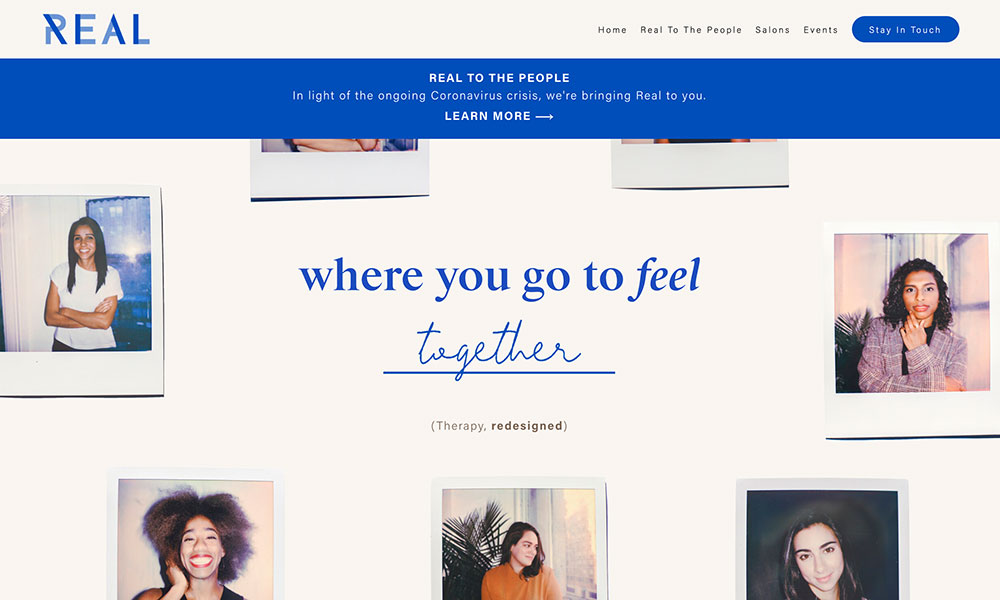From fitness and nutrition to sleep and mindfulness, wellness means something different to everyone, and COVID-19 has led a lot of people to place a renewed emphasis on living happier and healthier lives. This trend is not going away, even post-pandemic, and as such, consumers are looking for holistic and inclusive offerings from the health and wellness brands that they support. While many brands have responded to this need by offering more choices in the types of products, services, and ways to access them, we believe there is still room for health and wellness brands to further leverage the latest technology and digital trends as part of their brand strategy.
Here are some ideas on how to capture this new essence of wellness and transform your brand experience for current and future customers.
Offer Personalization in Product and Service Delivery
The trend of personalization has long been around in the marketplace, through Netflix recommendations, social media feeds, or even online shopping recommendations. This trend has trickled down into the wellness space and is here to stay. Here, personalization refers to tailored offerings that cater to individual needs, moving away from the one-size-fits-all paradigm of traditional western medicine. While privacy and security remain a concern, the benefits of personalization far outweigh the limitations.
In the nutrition industry specifically, personalization has witnessed rapid growth in recent times. Online nutrition programs, direct-to-consumer genetic testing kits, disease-focused services, and customized vitamin delivery based on health screening are emerging examples of personalization. Companies like VitaminLab and Vtmn Packs are changing the game for what is possible with personalized nutrition. No matter the product or service you offer, there are ways to incorporate personalization into your brand experience.

Source: A Year of Boxes
Strategy for Brands: Analyze your existing and target customer base and segment them based on their wellness goals. You can create an intake/sign-up questionnaire or quiz to gather relevant information about your customers. This will help you introduce new personalized or semi-personalized offerings targeting different customer groups. Develop tailored journeys that address your key customer segments.
Design for the Ecosystem
The personal digital ecosystem of consumers has gone beyond just their smartphones. In 2020 alone, there were approximately 181 million users of wearable devices, including fitness trackers and smartwatches. The use of wearable devices for health and wellness tracking is on the rise and is forecasted to grow by 19.9 percent in North America by 2026. These devices are an integral part of the wellness ecosystem for individuals.
The capabilities have increased beyond just step counting. Today, wearable devices measure vital health statistics such as heart rate, electrocardiogram rates, blood saturation level, and sleep quality. Owning these trackers gives customers more control and participation to proactively manage their health goals. And it is a strong reason for its continued growth.
These are just the early stages of innovation within the wearable market. The future of wearable devices incorporates advanced monitoring capability and new formats such as clothing and accessories. Device manufactures are working on more complex indicators such as emotion-sensing and body fat measuring capabilities, among others. And with these innovations, the opportunities are endless for fitness, nutrition, mental and physical health providers to design holistic wellness experiences.
Aside from the wearables category, the smart home devices category will play a key role in how an engaging wellness experience is delivered. Stay-at-home and quarantine rules have increased the need for at-home comfort, driving smart home device usage up by 33 percent. Types of smart home devices that have seen massive uptake include sleep devices, health monitoring devices, infrared sensors, smart speakers, and of course, our trusty voice assistants.

Source: CNET
Strategy for Brands: Understanding the presence and saturation of the new digital ecosystem can help your brand orchestrate a more meaningful omnichannel customer journey. Leverage the ecosystem to create immersive, frictionless wellness experiences. Designing for this new ecosystem helps you unlock the next level of personalization—ultimately resulting in better user engagement and retention.
Facilitate Connection
The pandemic has brought to the forefront the desire for human connection that is safe and physically distanced. Social wellbeing and connectedness are critical factors in boosting overall wellbeing, especially mental health and resilience. The world underwent a period of intense grief, depression, anxiety, and burnout during the pandemic, the consequences of which are going to impact healthcare in a big way. Every aspect of wellness is connected and influences one another. Thus, regardless of the category you operate in, mental health is essential to consider. Overcoming this degree of a global mental health crisis is a social responsibility and requires brands to offer customers support in healing and recovery. Companies like Real have done a fantastic job with creating on-demand, subscription-based communities for mental health support.

Source: Real
Strategy for Brands: An effective way to support your customers would be through facilitating connections and building community. Helping your customers’ social needs can enhance their other wellness outcomes too. Explore service-based or subscription-based business models for community connections within your existing customer base. At first, aim to build smaller, intimate communities.
Wellness is here to stay. The pandemic has been a catalyst giving rise to new interest in health and wellbeing. Consumers are increasing their spending on preventative health and wellbeing and are collectively redefining what wellness means to them. A final word of advice for wellness brands would be to keep scanning and listening for emerging trends in the wellness category and respond with speed and efficiency.

